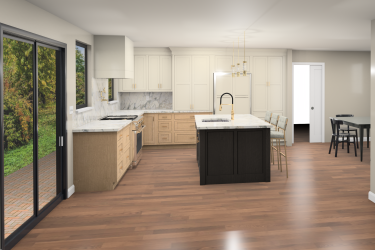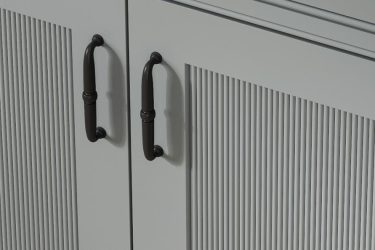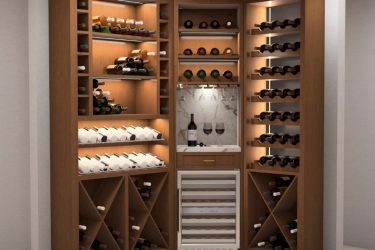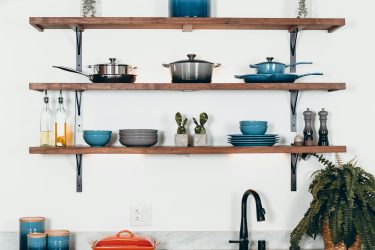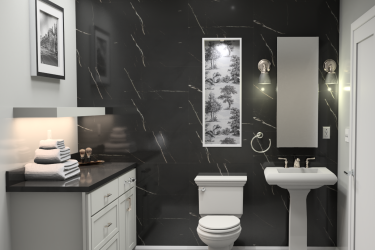What Are Metal Strips?
Metal strips are a transition piece. For example, you’ll see metal strips where tile meets drywall, at the corners of a shower curb, and around niches.
The purpose of metal strips are to protect you from unfinished tile edges. Likewise, exposed tile edges are unsightly. Most importantly, they make for a modern, and clean appearance.
Want help designing your bath or kitchen? Contact us today for a design consultation. Our design team is available to work with you virtually.
You have two options when selecting the shape of your metal strip: the L-shape and a rounded edge. The former is referred to as a jolly edge and latter a rondec.
Consider the design aesthetic of your kitchen or bath to decide the shape. Go for the L-shape if you want a crisp, contemporary look. On the other hand for a traditional feel to your space a rounded edge is best.
In addition, metal strips come in many different finishes. Certainly consider the color of your faucets, fittings, and accessories before buying.
Also Read: Painted Vs Stained Cabinets What’s Best For Your Kitchen Cabinets?
What Are Bullnose Tiles?
Bullnose tiles have one or two sides with a finished and rounded edge. Bullnose tiles are great for a smooth transition. Consequently, if you’re after a decorative look consider a chair rail instead of bullnose tiles. Similarly, a pencil liner adds more interest than bullnose.
In short, pencil liners, bullnose, and metal strips are all interchangeable for most applications. Meanwhile consider design, your budget and availability of the materials when deciding which material to use.
How To Decide Between Metal Strips and Bullnose:
Metal Strips
- Metal strips are the affordable option.
- They readily available in popular finishes.
- You must know the thickness of your tiles before ordering.
- Match the finish to your fittings, fixtures, and accessories.
- As a decorative feature, install metal strips below and above an accent.
- Outside and inside corner pieces are available to put a cap on sharp edges.
Tile Bullnose
- Perfect for a seamless transition.
- Purchased by the piece.
- Range in size from 6″ to 24″.
- For larger tiles they might not be available.
- Install as a base board around your bathroom.
- If you’re doing a shower niche, decide if you’d like to bullnose inside the niche or around the outside.
Also Read: Furniture Board vs. Plywood Cabinets
Conclusion
To sum up, there are a number of factors to consider including style, availability and budget. Metal strips are perfect for a clean, contemporary look. On the other hand, bullnose tiles are great for transitional and traditional spaces. Still unsure? Send us a note about your project. We’d love to hear from you.

